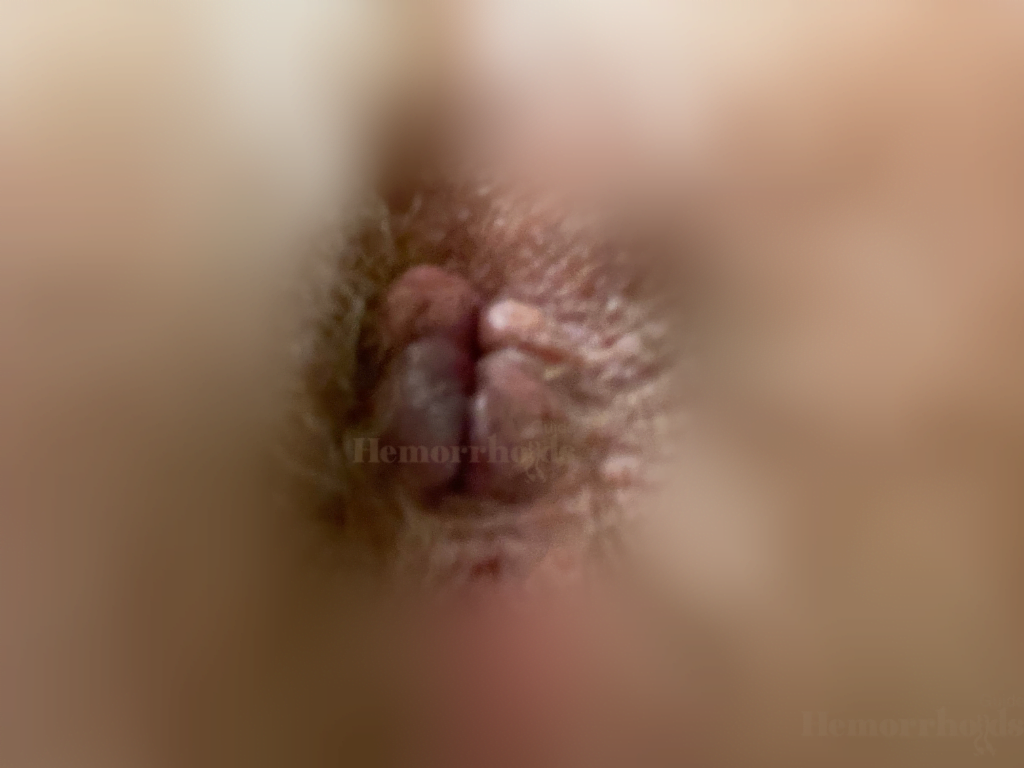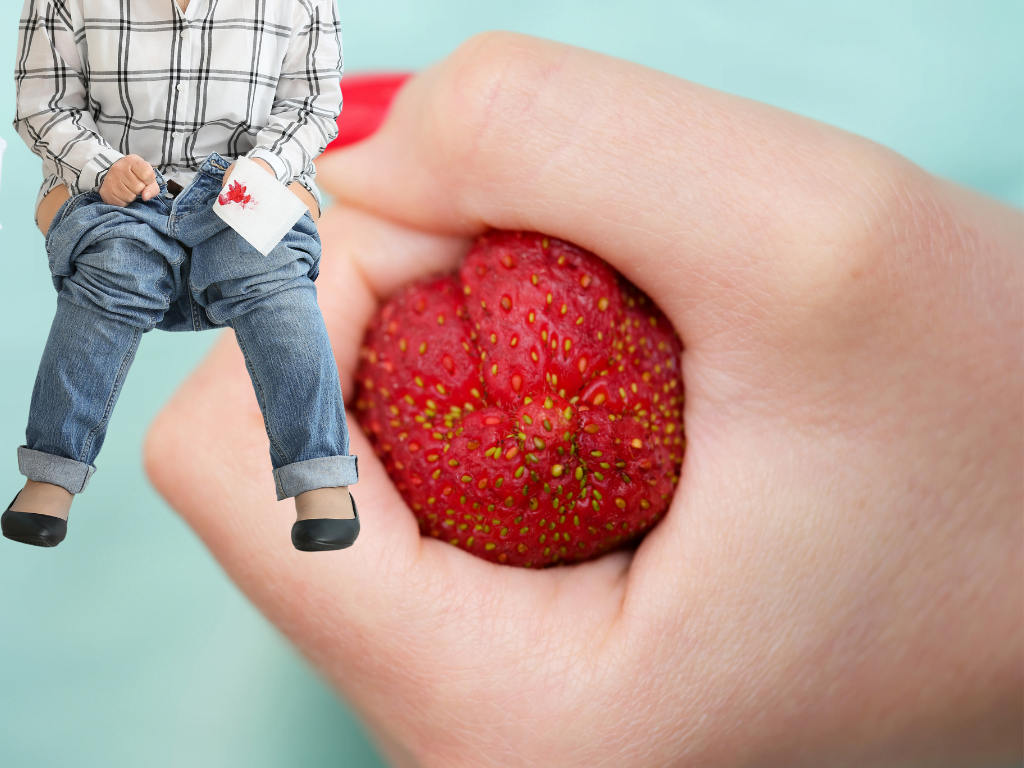Most people have heard about hemorrhoids. Those who haven’t might know them by another name – piles. Both terms refer to a condition where veins in the anus are inflamed enough to cause a lump.
While most people are aware of hemorrhoids and the fact that they can be quite painful, many don’t know that they can also exist internally or externally, and sometimes even both at the same time.
External hemorrhoids occur under the skin around the anus and are visible externally. Internal hemorrhoids, however, occur inside the anus and rectum and may not be visible on external inspection.
In this article, we’ll be taking an in-depth look at the external type of hemorrhoids. We’ll be discussing everything you need to know about them, including their physical properties, duration, treatment, and real pictures of external hemorrhoid taken by me.
What is an External Hemorrhoid?
A person is said to have external hemorrhoids when they experience inflammation under the skin around the anus. The inflammation is often significant enough to form a lump or multiple lumps.
External hemorrhoids usually occur as a result of dilated blood vessels becoming so enlarged that they begin to protrude.
Both internal and external hemorrhoids may arise due to a handful of factors. Some of the most common include:
- Repeated straining during bowel movements
- Sitting on a toilet for too long
- Weakened support tissues
- Heavy lifting
- Obesity
- Not eating enough fiber
Pregnant people may also experience hemorrhoids thanks to the increased pressure on their veins by their abdomen.
How Does an External Hemorrhoid Look?
Hemorrhoids may take on different appearances depending on which type they are. External hemorrhoids appear as bumps around the anus.
Sometimes, they may appear blue-colored and may even cause bleeding when using the toilet. The extent to which they are swollen also varies depending on how significant the inflammation is.
External Hemorrhoid Real Photos


How Long Does an External Hemorrhoid Last?
It is pretty common for hemorrhoids to go away on their own. Generally, smaller hemorrhoids disappear in only a few days. Larger ones, however, may take weeks or refuse to go away entirely.
For those that don’t go away on their own, additional treatments may be needed before they heal. It is also possible for pregnant women to experience hemorrhoids until they give birth, after which it then goes away.
Lastly, hemorrhoids can return even after they’ve been treated. Those experiencing repeated cases of returning hemorrhoids should endeavor to speak to a gastroenterologist who will be able to recommend more permanent solutions.
Thrombosed External Hemorrhoid
Thrombosed hemorrhoids occur as a result of a blood clot (or thrombosis) inside the extending blood vessel. A hard and painful lump appears that may cause severe discomfort and itching.
Thrombosed hemorrhoids are not limited to external hemorrhoids alone. They can also happen in cases of internal hemorrhoids.
Symptoms of thrombosed hemorrhoids include additional pain and itchiness, swelling and redness, and the appearance of a blue color around the area.
It is advisable to visit a doctor for a hemorrhoid diagnosis instead of doing it on your own. They will be able to consider your health history, symptoms, and the result of a physical exam to tell which kind of hemorrhoid you have.
Can External Hemorrhoid Burst?
An external hemorrhoid can burst if it is thrombosed. Because thrombosed hemorrhoids cause hard and painful lumps, it is common for pressure to build up inside and cause them to burst.
When a hemorrhoid bursts, it may be possible to take care of it at home. Home remedies can be efficient only if the following symptoms do not occur:
- Significant bleeding (enough to change the color of the toilet water to red)
- Continuous bleeding
- Passing large blood clots
- Severe pain that refuses to stop
How to Shrink External Hemorrhoid at Home
As mentioned earlier, it is possible to take care of external hemorrhoids at home. Below are some popular and effective methods to do so.
Home Remedies
- Cold Compress – To make a cold compress, wrap ice in a clean cloth and apply it to the hemorrhoids. Do this for about 15 minutes at a time. This will help you reduce both the pain and the swelling.
- Sitz Bath – Sitz bath is a process of soaking your bottom in warm water. You can do this using a small tub filled with two inches of warm water. Sit in it for about extended periods during the day.
It is also common to add Epsom salts to the water for additional efficacy. Doing this several times daily will help ease the pain and reduce swelling.
- Ointments and Wipes – Many people use ointments and soothing wipes to alleviate hemorrhoids. These ointments are typically made from natural ingredients like aloe vera and hazel, which have been used to treat inflammation for centuries.
It should be mentioned that these products often need more research to corroborate their claims of effectiveness.
- OTC Creams – A few topical medications that can be obtained “over the counter” are also helpful.
In the end, while all the above methods may serve as remedies, it is always important to contact a healthcare professional when the pain and symptoms continue to exist a week after home remedies have been applied.
Home Preventions
Apart from remedies, a few simple home practices are needed to ensure that the onset of a hemorrhoid is prevented in the future. These include avoiding constant straining during bowel movements and staying away from lifting heavy things.
Incorporating as many fibers as possible into your diet is also highly advisable.
Drinking lots of water and taking stool softeners/laxatives are additional methods by which hemorrhoids may be prevented at home.
Final Thoughts
Hemorrhoids occur when blood vessels around the anus become so enlarged that they begin to protrude. They may occur internally or externally.
Both external and internal hemorrhoids are quite common, and they often go away on their own in a matter of days or a few weeks. In cases where they persist, however, healthcare professionals are more suited to diagnose which particular type of hemorrhoids is present and formulate a course of action for effective treatment.

